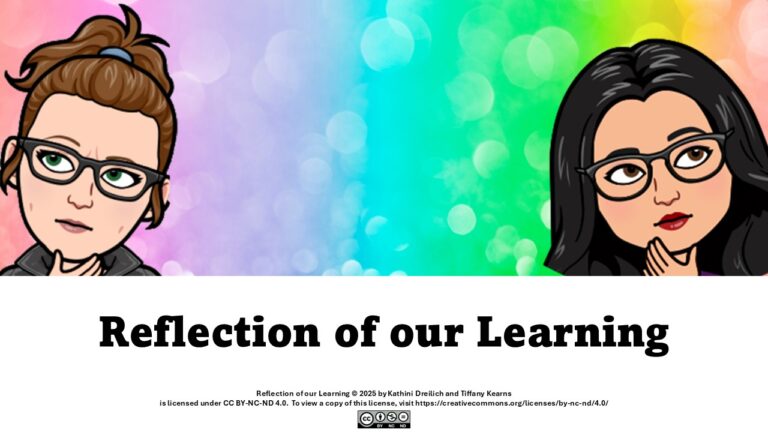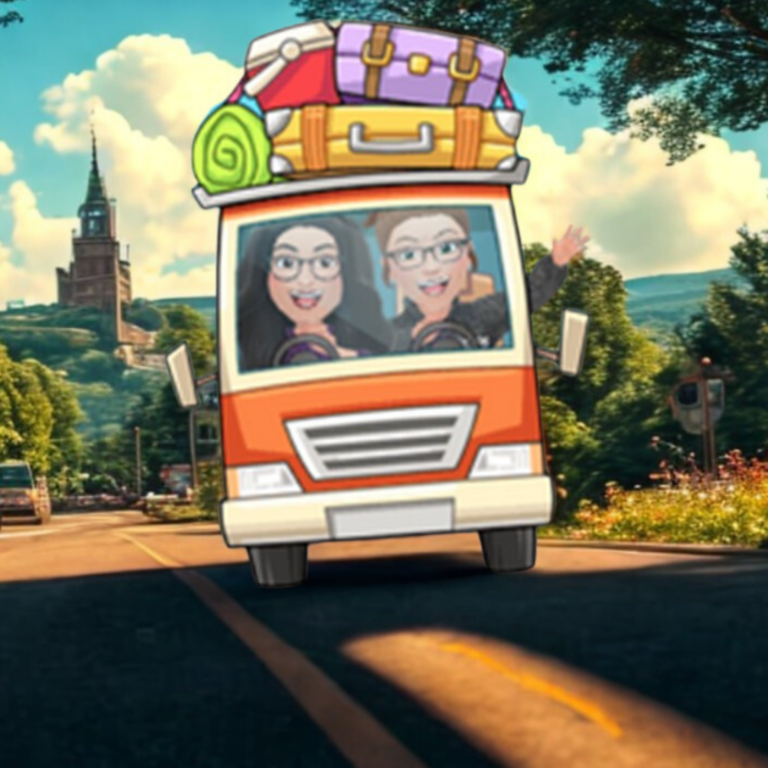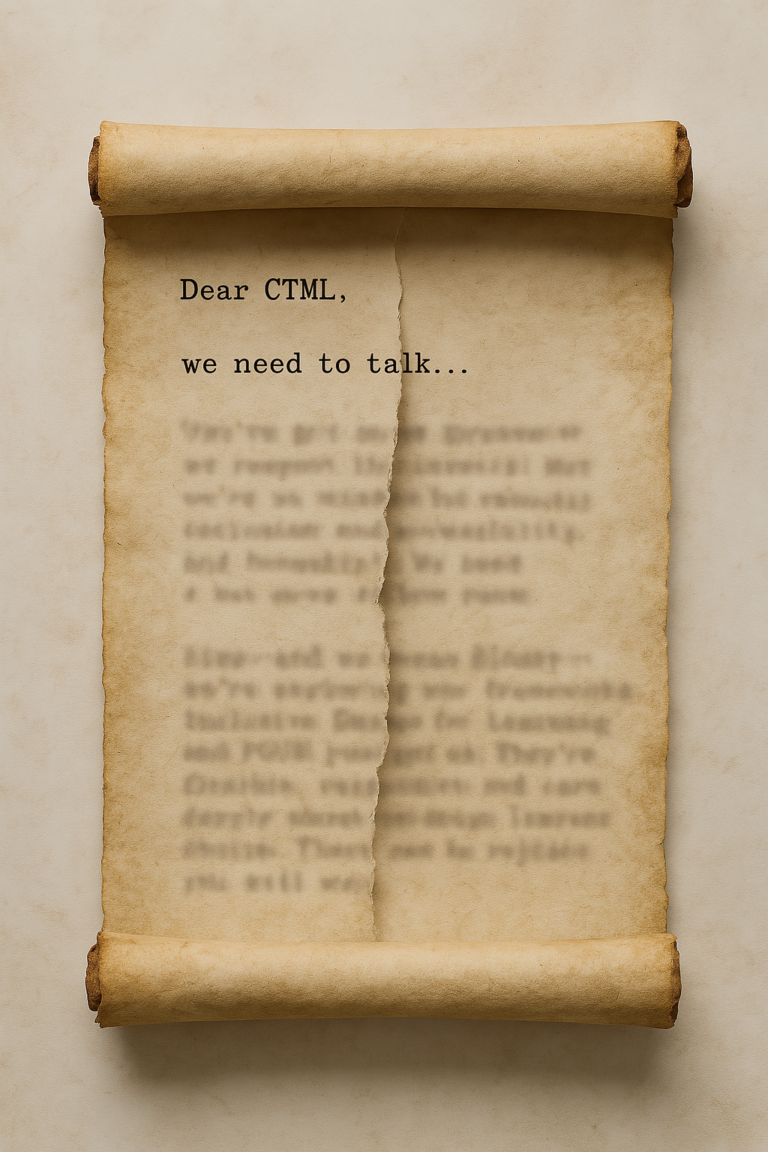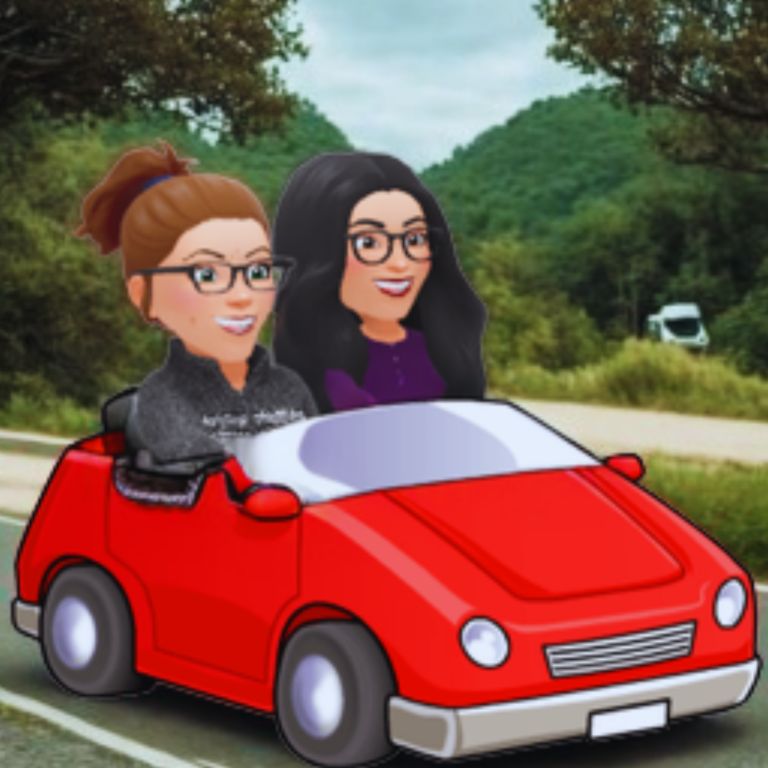Multimodality is the New Literacy
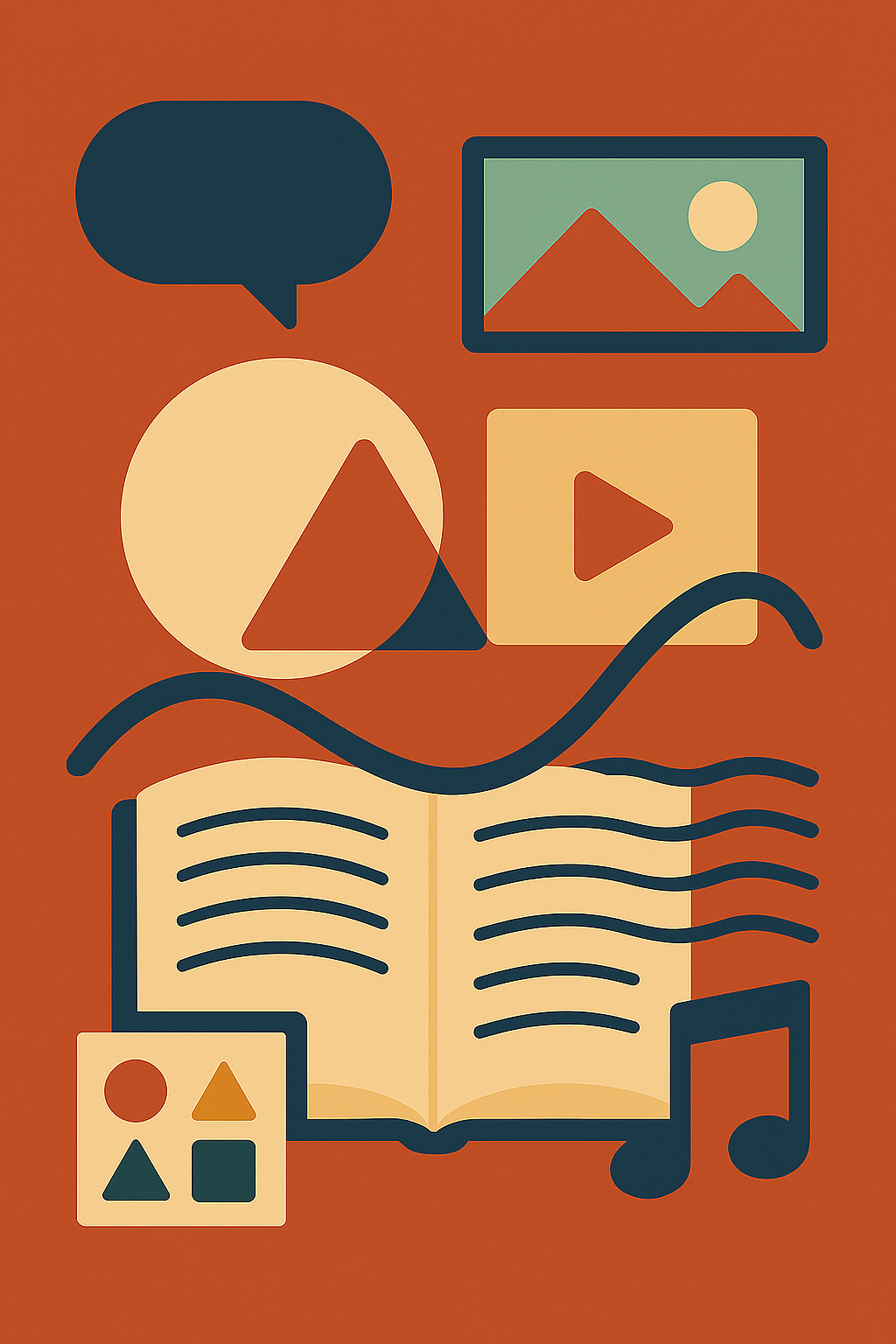
Featured Image by CoPilot
Tiffany’s Reflection on A New Definition of Literacy
Communication skills for today’s generation are not the same as the literacy of the past. When we think of literacy, many of us think of written language. But these days written text alone is being replaced by what can be communicated on screens – a mixture of text, images – moving and static, and sound. As educators, when we think about reaching the students of today who are at the margins, we need to make adjustments to suit their lived experiences which are increasingly saturated with videos, memes, social media posts, and infographics. To not adjust to this new literacy would create a mismatch.
Kati wrote in one of her posts that a multimodal approach to teaching literacy is crucial for learners to be able to participate in an increasingly digital society. That means that our idea of what it means to be literate needs to change because the way we read, write and communicate has transformed to predominantly digital spaces. We are seeing how digital literacy is not only interwoven with traditional forms of literacy, but technology is actually changing the landscape of literacy – changing the way we read, write and communicate. It is becoming increasingly more multilingual, multicultural, and multimodal.
This change is increasingly second nature to the younger generations who are now brought up reading and writing in our digital world. Teaching literacy with multimodal texts therefore becomes more engaging and relevant to young learners. But what about adults? Donaghy and colleagues (2023) explain that the world that adult students live and work in is increasingly rich with visuals, sounds, and text—an interconnected, multimodal environment. When instructors rethink what modern communication entails, their students are better prepared to engage meaningfully with the world around them. And seniors? Learning to use technology enhances their quality of life by providing better access to information, such as health care resources, and improving social connections through expanded communication options. This in turn supports mental and emotional well-being. Using the internet offers older adults cognitive benefits through activities like games, news, and online courses, helping to slow cognitive decline.
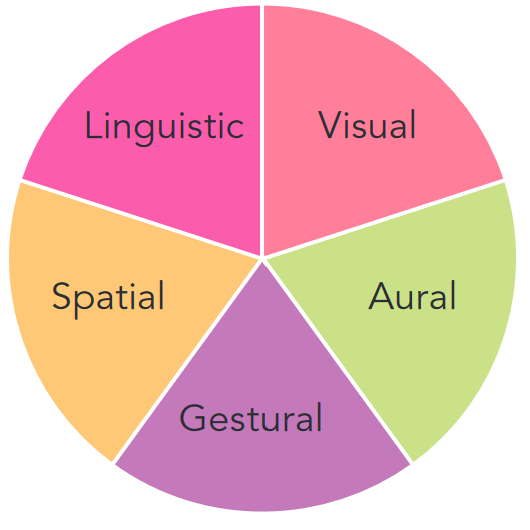
Incorporating multimodal texts into teaching is key to creating a more inclusive learning environment (Donaghy et al. 2023). As literacy is now more than just spoken and written language, Donaghy et al. suggest five modes of communication: linguistic, visual, aural, gestural, and spatial.
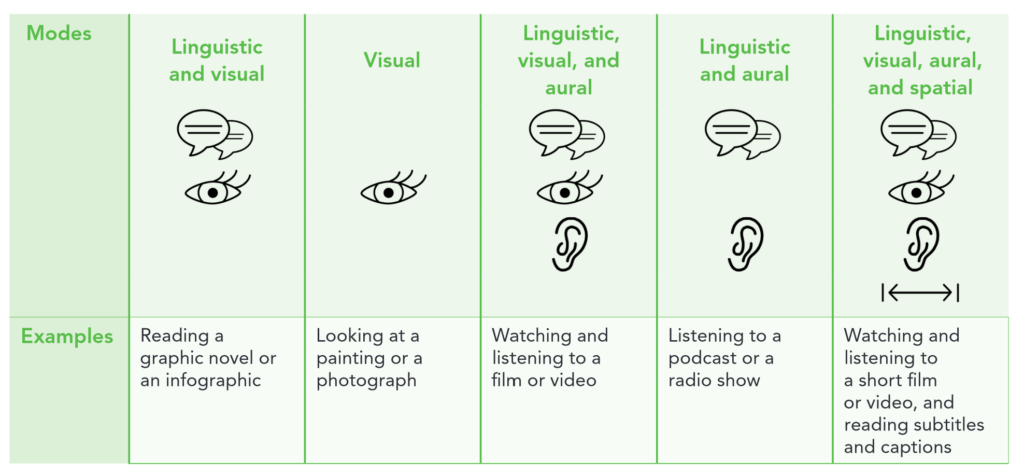
Kati and I tried to create our videos and interactive H5Ps with what we learned from CTML and Inclusive Design for Learning, but did we hit the mark with the 5 modes of communication? Are our videos multimodal?
Linguistic Mode – focuses on the meaning of written or spoken language
We chose our words carefully when making our videos. Both our target audiences cannot take wordy explanations, we stuck to what needed to be said. Sentences and stories were carefully crafted and clearly spoken – text and speech were often used together.
Visual Mode – focuses on the meaning of what can be seen
Video is a form of visual mode, but even within our videos we carefully chose images, colours, and the physical layout.
Aural Mode – focuses on the meaning of what can be heard by the listener
Our videos do not have music or distracting sounds. We chose to just have our voices. Putting the videos into YouTube allows for the listener to adjust the speed, pause and re-start.
Gestural Mode – Focuses on the meaning of communication through movement.
We didn’t appear in our videos so facial expressions, hand gestures, and body language didn’t apply. We did, however, have image movement as the signaling CTML principles.
I think that overall, Kati and I did well with connecting to the five modes of communication through our videos. It wasn’t easy to keep all the modes and CTML principles in mind, it took a lot of thought and re-working of different elements, but in the end the time and trials were worth it. We learned a lot and hope our videos will help others learn.
References
Donaghy, K., Karastathi, S., & Peachey, N. (2023). Multimodality in ELT: Communication Skills for Today’s Generation. Oxford University Press.
Multimodality is the New Literacy © 2025 by Tiffany Kearns is licensed under CC BY-NC-ND 4.0

